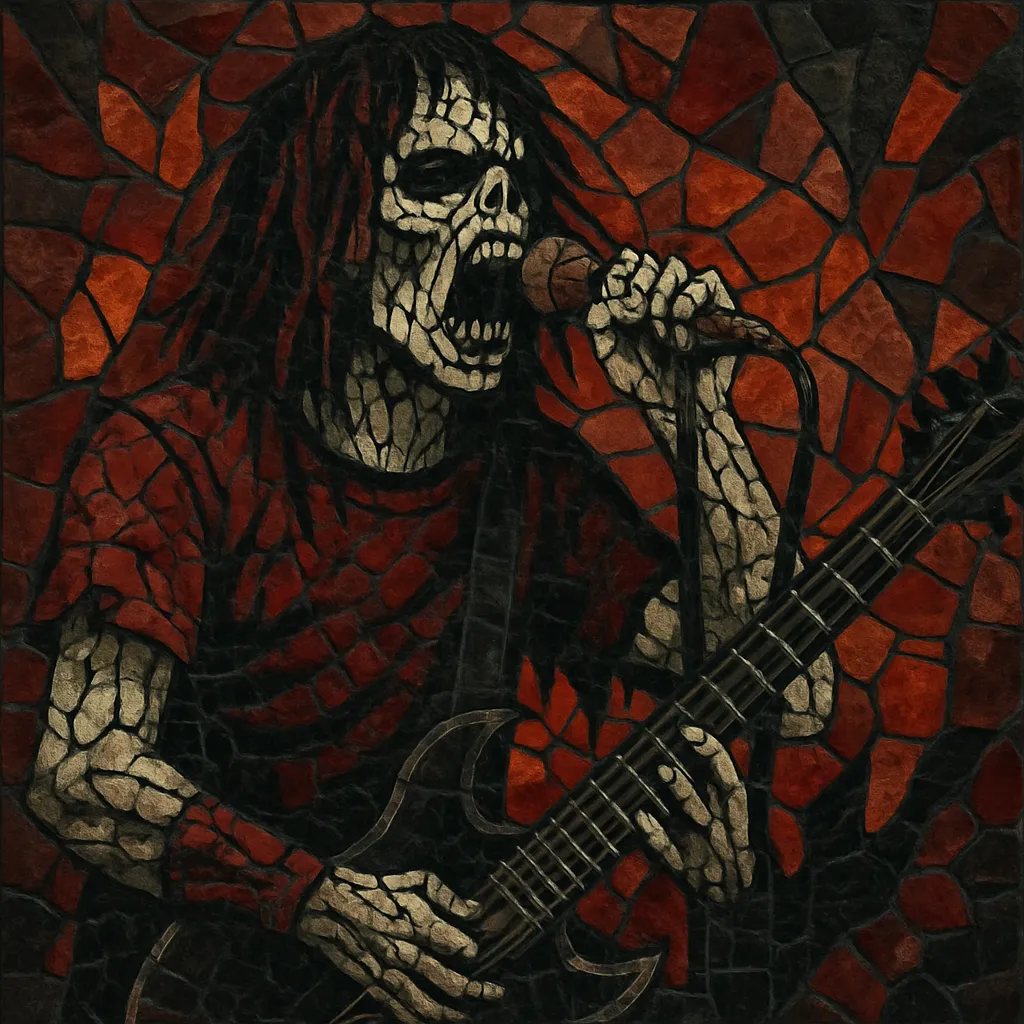
Deathgrind is a fusion of death metal and grindcore that pairs dense, downtuned riffing and guttural vocals with the whiplash speed, brevity, and blast-beat intensity of grind.
Songs are often short and explosive, built around tremolo-picked and chromatic riffs, sudden stops, and lurching tempo shifts. Vocals typically alternate between deep growls and high-pitched screams, while drums rely on relentless blast beats, gravity blasts, and rapid double-kick patterns. The style balances death metal’s weight and technicality with grindcore’s punk immediacy and abrasion.
Lyrical themes vary widely: socio-political critique and anti-authoritarian messages (a grindcore inheritance), visceral and medical-gore imagery (shared with goregrind), and, in some bands, environmental or misanthropic commentary. Production ranges from raw and overdriven early recordings to modern, tightly edited, high-gain mixes with precise drum triggering.
Deathgrind emerged where UK and US scenes of death metal and grindcore overlapped. Grindcore’s foundational acts (e.g., Napalm Death) and the gore-splattered extremity of early Carcass pushed speed, brevity, and sonic abrasion to new limits, while death metal contributed heavier riffing, low-register growls, and more complex song structures. Albums such as Terrorizer’s "World Downfall" (1989) and Carcass’s late-’80s work helped blueprint the merging of grind’s velocity with death metal heft.
Through the early-to-mid ’90s, bands like Brutal Truth and Assück refined a lean, politically charged, hyper-fast approach that emphasized precision blast beats and tightly coiled riffs. At the same time, death metal’s technicality seeped further in, producing songs that were still concise but more riff-dense and structurally varied. Labels such as Earache and Relapse circulated these sounds internationally, helping codify deathgrind’s identity.
A new generation broadened the palette. U.S. bands such as Cattle Decapitation, Cephalic Carnage, and Misery Index integrated advanced musicianship, rhythmic trickery, and clearer production, while European groups like Aborted (Belgium) tightened the connection between brutal death metal and grind’s speed. The style diversified: some bands leaned into political lyrical focus; others revived gore-driven aesthetics with more modern clarity.
Deathgrind today spans raw, crust-tinged assaults and polished, technically demanding records. Production has grown more precise, with surgical drum editing and multi-amped guitar tones common, yet the core traits—blast-driven tempos, extreme vocals, and compact, high-impact songwriting—remain. The genre continues to influence offshoots at the edges of grind, death metal, and extreme experimental forms.

